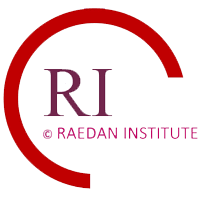Harnessing the Power of Breath: Techniques for Deep Relaxation.
Introduction
Finding times of profound relaxation has become more crucial for our general well-being in our fast-paced modern life. The breath is one potent tool at our disposal. In addition to giving us life, breathing is the key to deep relaxation and inner calmness.
This essay will examine the breath’s transforming potential and teach you some methods for profound relaxation. We may cultivate more calm, lessen tension, and improve our general well-being by using the power of breath.
The Link Between Breath and Relaxation
We frequently lose sight of the importance of our breath during our hectic lives. But there is a close connection between our nervous system and our breath. The parasympathetic nerve system, known as the rest and digest response, is triggered when we intentionally focus on our breathing. Deep relaxation, a slowed heartbeat, lower blood pressure, and a peaceful environment are the outcomes of this state.
Understanding the Benefits of Deep Breathing Techniques
Deep breathing exercises are beneficial for our emotional, mental, and physical well-being. Intentionally inhaling deeply has the following benefits for us:
The relaxation response is triggered by deep breathing, which helps to lessen stress and anxiety. It improves tranquilly, calmness, and nervous system relaxation.
Deep breathing increases brain oxygenation, which improves cognitive performance, mental clarity, and focus. It aids in productivity improvement and mental haze removal.
Conscious breathing helps control emotions, enabling us to react to situations with better clarity and composure. This promotes emotional balance and well-being. It can help foster emotional resilience and help manage intense emotions.
Supporting Physical Health and Vigour: By increasing blood flow and oxygenation, deep breathing improves physical health and vigour. It can help digestion, raise energy levels, and strengthen the immune system.
Exploring Deep Breathing Techniques for Deep Relaxation
To achieve profound relaxation, one might practice a variety of deep breathing techniques. Let us look at a few of them:
Using the diaphragm to inhale deeply and slowly is known as diaphragmatic breathing, also referred to as belly breathing. By triggering the parasympathetic response, this method encourages relaxation. Diaphragmatic breathing exercises:
Sit down or lay on your back in a posture that is comfortable for you, lie on your stomach with one hand and your chest with the other, deeply inhale through your nose while feeling your abdomen rise and widen, and slowly exhale through your mouth while sensing the contraction and fall of your stomach.
This technique should be repeated while concentrating on your breathing and the smooth rising and falling of your abdomen.
Box breathing, often referred to as square breathing, is a technique in which you balance the lengths of your inhales, exhales, and interstitial pauses. This method aids in calming the mind and promoting relaxation. Box breathing drills:
Find a peaceful, cosy area, To the count of four, take a deep breath through your nose, for four counts, hold your breath, To the count of four, slowly exhale through your mouth, for four counts, hold your breath, to make a square pattern with your breath, repeat this technique.
Alternate nostril breathing is a practice that promotes harmony and tranquility by controlling the body’s energy flow. It encourages unwinding, stress reduction, and mental clarity. To feel at ease inhaling through several nostrils:
Make yourself comfortable and sit down, take a deep breath through your left nostril while covering your right nose with your right thumb, with your ring finger, close your left nostril; next, open your right, use your right nostril to exhale, after inhaling, place your thumb over your right nose, Now that your left nostril is open, exhale through it.
As you continue to breathe through each nostril alternately, pay attention to the equilibrium that the airflow creates.
Integrating Breathwork into Daily Life
To improve relaxation and well-being, deep breathing exercises can be incorporated into your everyday routine. Think about the following techniques:
Start your day with a few minutes of deep breathing in the morning. To lay a peaceful, grounded foundation for the day ahead, set aside some time to concentrate on your breathing.
Breath Breaks: Throughout the day, take quick breaks to take a few deep breaths. To clear your thoughts and let the tension go, all it takes is closing your eyes, inhaling deeply, and slowly exhaling.
Breath Awareness: Work on being conscious of your breath while you go about your regular activities. To stay present and at ease when working, walking, or cooking, bring your focus to the sensation of your breath and use it as an anchor.
Guided Breathwork: Research guided breathwork methods using online sources or meditation software. These resources can give you methodical guidance and assistance as you create your breathwork routine.
Conclusion
In conclusion, using the breath as a powerful tool can help you relax deeply and improve your well-being in general. Deep breathing exercises can help us relax, increase mental clarity, and lessen stress in our daily lives. Be gentle with yourself, practice frequently, and acknowledge the transformational power of breath. Use your breath as a map to a more contented and calm life.
#PowerOfBreath #DeepRelaxation #BreathWork #StressRelief #MentalWell-being #MindBodyConnection #Calmness #Wellness #BreathAwareness #RelaxationTechniques #UKWellness #BreathingExercises #Mindfulness #UKHealth


